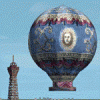
Sign in to follow this
Followers
0

Improving TileProxy -- need some technical help
By
LuisFelizTirado, in FSX | FSX-SE Scenery Design Forum - How To


By
LuisFelizTirado, in FSX | FSX-SE Scenery Design Forum - How To